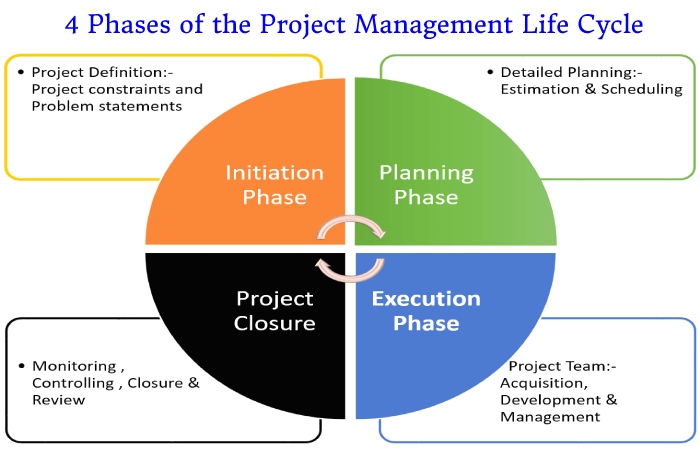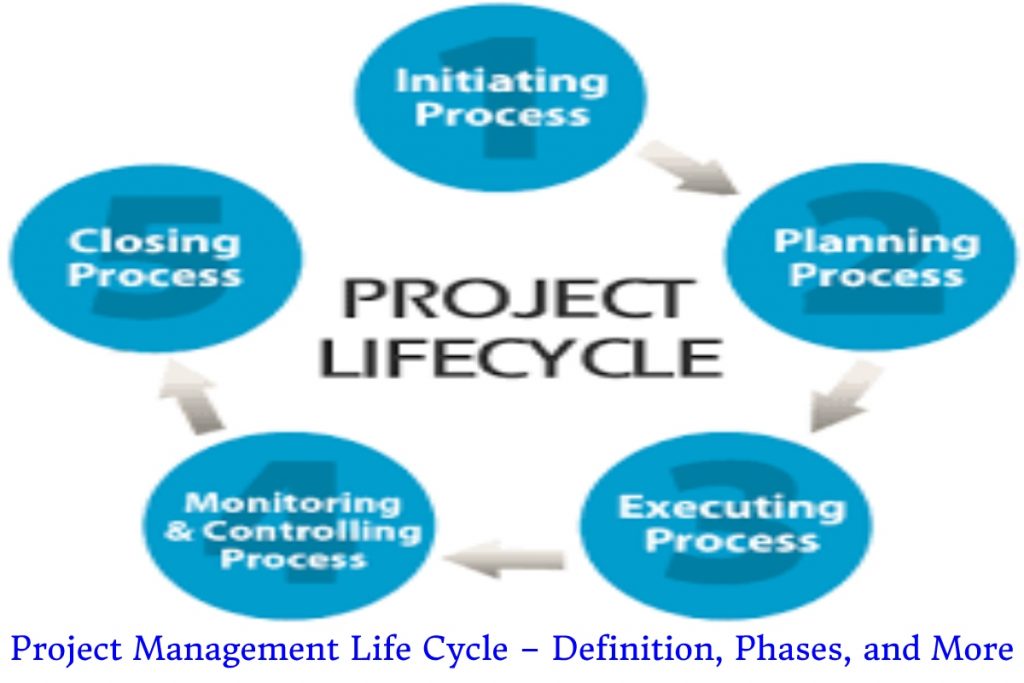Project Management Life Cycle Definition
The project management life cycle describes the top-level processes for implementing a successful project. According to Project Management Institute Research, for every $ 1 billion those companies invested in projects in the United States, $ 122 million due to poor project performance.
Waste of money and resources can be avoided through effective project management, as 57% of failed projects fail due to communication interruptions. In the project management life cycle stages, you develop a project idea, define its objectives, plan implementation, and bring it to completion.
4 Phases of the Project Management Life Cycle
The project management life cycle is into four phases: Initiation, Planning, Execution, and Completion. These phases form the path your project takes from start to finish.

Stage 1: Introduction
First, you need to identify a business requirement, problem, or opportunity and brainstorm how your team can meet that requirement, solve that problem, or take advantage of this opportunity. In this step, you set a goal for your project, determine if the project is feasible, and identify the actual results for the project.
Rather than wait for the project strategy, Moira Alexander advocates a mental shift from project “manager” to project “leader”:
“Project managers must be able to convince business leaders of the intrinsic value they offer to the company at a strategic level when they are at the table from the beginning of strategic planning rather than making decisions after the fact.
Project managers’ effectiveness when they offer a “fix” or “workaround” as soon as a high-level historical business decision without their expertise. It gives you everything you can to get your voice heard early on before strategy is in stone.
Steps for the project start phase may include:
Conduct a Feasibility Study
Identify the main problem your project will solve and if your project provides a solution to that problem.
Identify the Scope
Define the complexity and breadth of the project.
Identify Services
Describe the product or service to be provided.
Project Stakeholder Identification
Find out who the project is about and what needs they may have.
Developing a Business Case
Use the above criteria to compare the project’s potential costs and benefits to see if it is progressing.
Create a Service Description
Document the project’s objectives, scope, and services, which you have previously identified as a working agreement between the project manager and those involved in the project.
Stage 2: Planning
Once the project moves forward based on your business case, statement of work, or project initiation document, you enter the planning phase.
At this stage of the project management life cycle, you break the larger project into smaller tasks, build your team, and create a schedule to get things done. Create smaller goals within the larger project and make sure each one is achievable within the time frame. and also, smaller goals should have a high possibility for success.
The steps for the project planning phase can be:
- Create a project schedule.
- And also, identify the project schedule, including project phases, tasks to be performed, and any restrictions.
Stage 3: Execution
He got business approval, developed a plan, and created his team. Now he gets down to work in the execution phase.
At this stage of the project management life cycle, the project manager’s job is to keep work on the track, organize team members, manage schedules, and make sure work is according to the original plan.
Steps for the project implementation phase may include:
- Create tasks and organize workflows – assign granular aspects of projects to the right team members and make sure team members aren’t overloaded
- Inform team members about tasks:
- Explain tasks to team members.
- And also, provide necessary guidance on how to perform them.
- Organize process-related training if required.
- Communication with Team Members
- Provide updates for project participants at all levels
- Work Quality Monitoring
- Make sure team members meet their time and quality goals for tasks.
- Budget Management.
- And also, monitor expenses and keep the project on track in terms of assets and resources.
Stage 4: Closing
Once your team has finished working on a project, it enters the closing phase. In the final step, you provide the final results, free up project resources, and determine the project’s success. The main project work does not mean that the project manager’s job is still essential, including evaluating what worked and what did not work with the project.
Steps for the project closure phase may include:
Project Performance Analysis
Use a prepared checklist to determine if project objectives(tasks completed, completed on time, and the budget) and if the initial problem is resolving.
Analysis of Team Performance
And also, evaluate the performance of team members.
Achievement of their Goals
Project completion documentation: Ensure all aspects of the project are completed without open ends and inform key stakeholders.
Conducting Post-Implementation Reviews
Conduct a final project analysis, taking into account lessons learned from similar projects in the future.
Related Searches:
[project management life cycle pdf]
[project management life cycle edx]
[project management life cycle definition]
[project life cycle diagram]
[project life cycle with example]
[project management life cycle pmi]
[project life cycle pmbok]
[5 phases of project management ppt]


